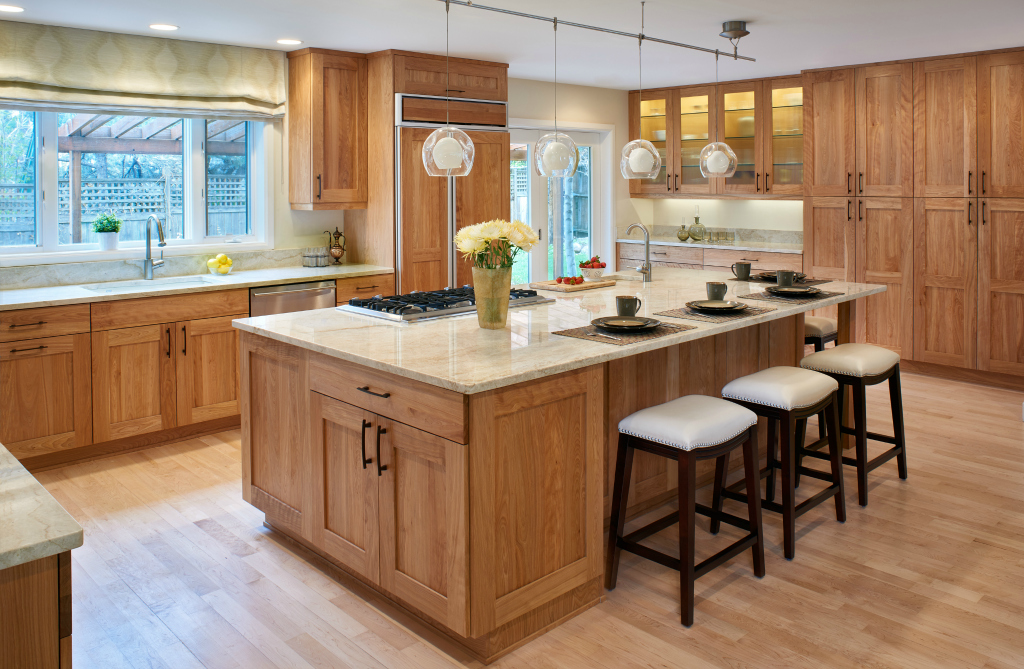
The ABCs of Interior Decorating
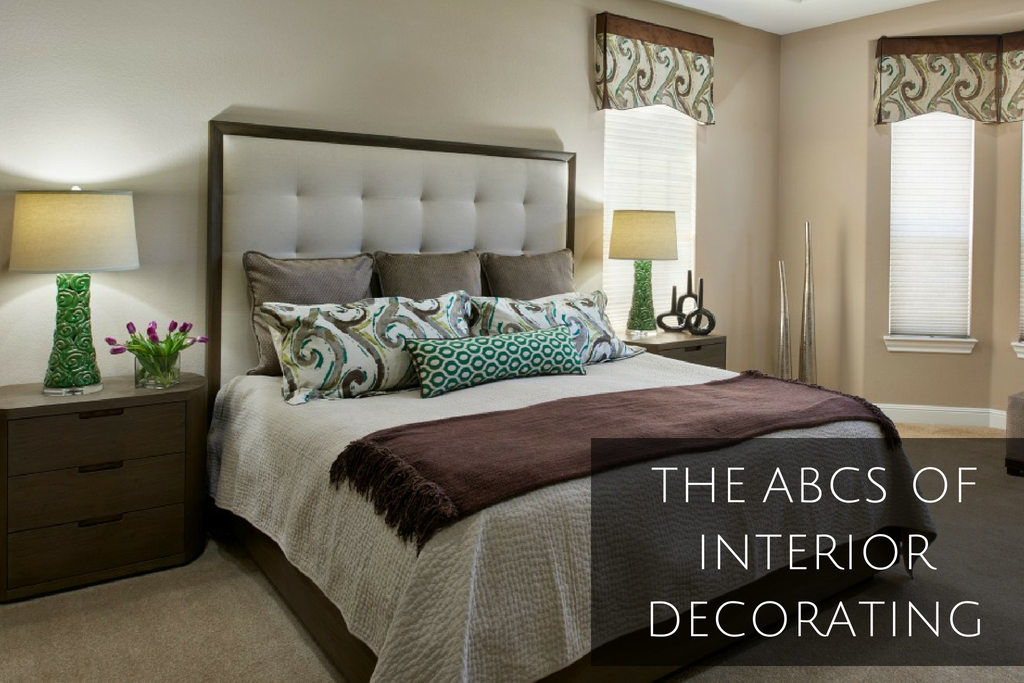
Interior design basics entail incorporating the use of color, space and light to create the home you’ve always dreamed of. Knowing the essentials is useful even when you’re hiring a designer to create your look; it’ll help you establish a living space that is both stylish and reflects your personal taste. A well-decorated home is so much more than buying a dining room set and hanging draperies. One or two items aren’t going to get the job done. When it comes to designing a room, think of yourself as a composer creating a piece of music. Add notes that play off the architectural elements and textures that will layer the room with feeling to evoke emotion. Think of interior decorating as the driving force behind the composition of the room.

Interior Design Basics
So what are the ABCs of interior decorating? Think aesthetics, balance and context. There is a unique vision for your space; that’s the aesthetics part — the look. You also need it to be balanced and harmonized in order to feel right. The context relates to the functionality of the room and what it will be used for. The space should be well-operating without any obstacles or awkward spots. You also want the furniture to support the activities meant for the room. If you’ve ever rearranged furniture and then been amazed at how much better the room flows, then you get it.
Schedule a Consultation Today
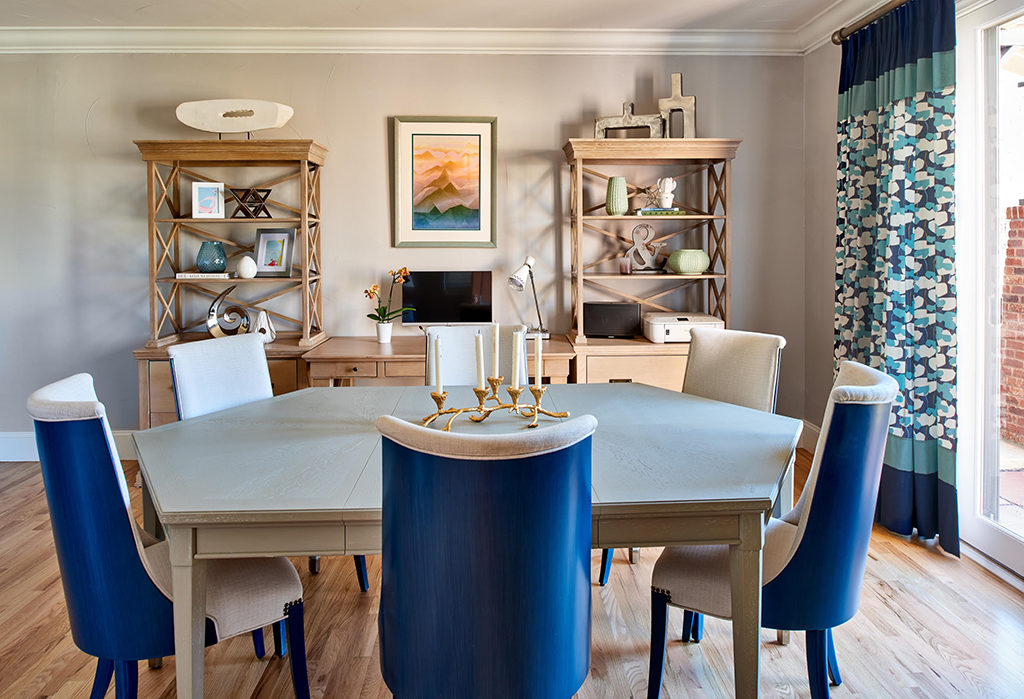
See this entire Beautiful Habitat project
Interior Decorating Principles
Once you’ve solidified the room’s function, you can move forward incorporating design principles into the plan to create a room that looks and feels “just right.” Do you want something grand and luxurious or cozy and inviting? Will you be entertaining, or is this area for everyday family use? High traffic or low traffic? Here are a few basic principles to know and follow.
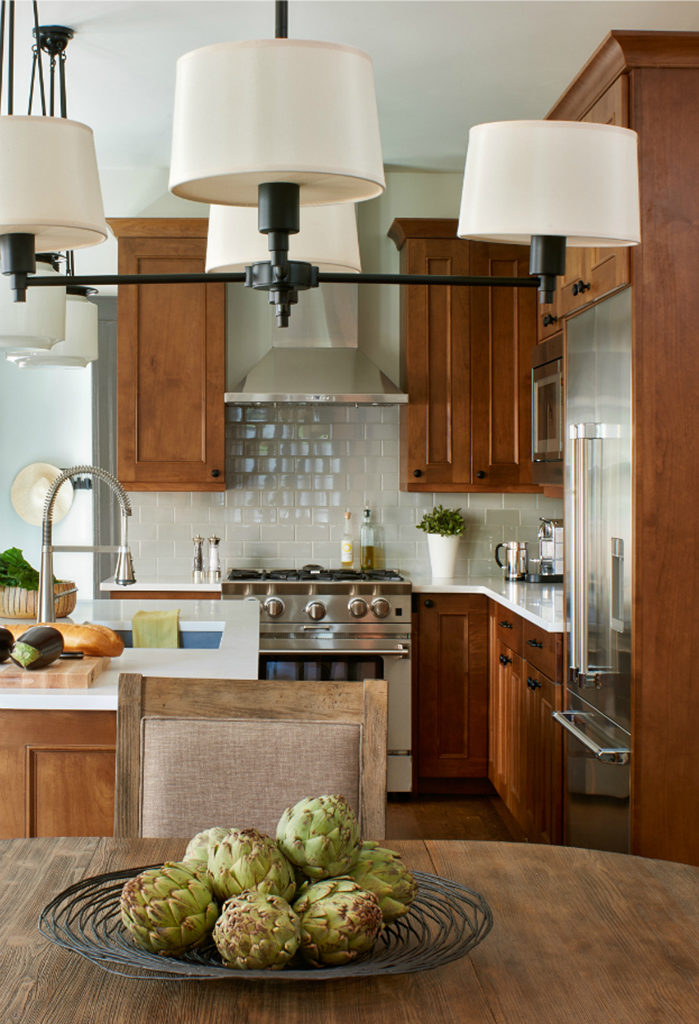
See this entire Beautiful Habitat project
Function & Unity
One of the most important building blocks of interior decorating is function and unity. Your space should cater to how you and your family live within it. In order to do this, it’s important to note how you’ll utilize the space, so you can place your furniture appropriately. For example, a kitchen needs to have a nice flow and allow for people to be in multiple locations doing different tasks, like cooking or eating. A living room should have a space to relax and be conducive to conversation, and if dinner parties are your thing, you’ll want the dining room furniture to be able to accommodate extra guests.
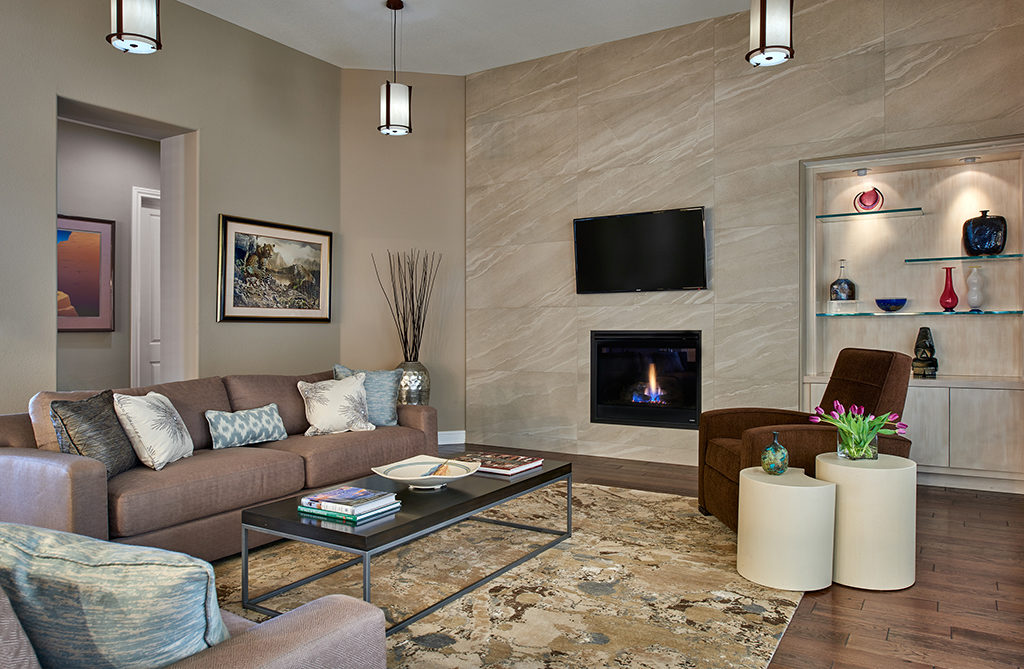
See this entire Beautiful Habitat project
Scale & Proportion
Scale refers to the relative size of a design element within a particular space or in relation to one another. For example, in a small room, you wouldn’t want an oversized media center and a large sofa because it would make the room feel cramped. However, appropriately-sized furniture would make the room feel inviting and more spacious. The reverse is also holds true. You wouldn’t want to only have a loveseat in a great room. It would feel dwarfed. Instead, you’d want an ample amount of appropriately-sized furniture to balance the proportion.
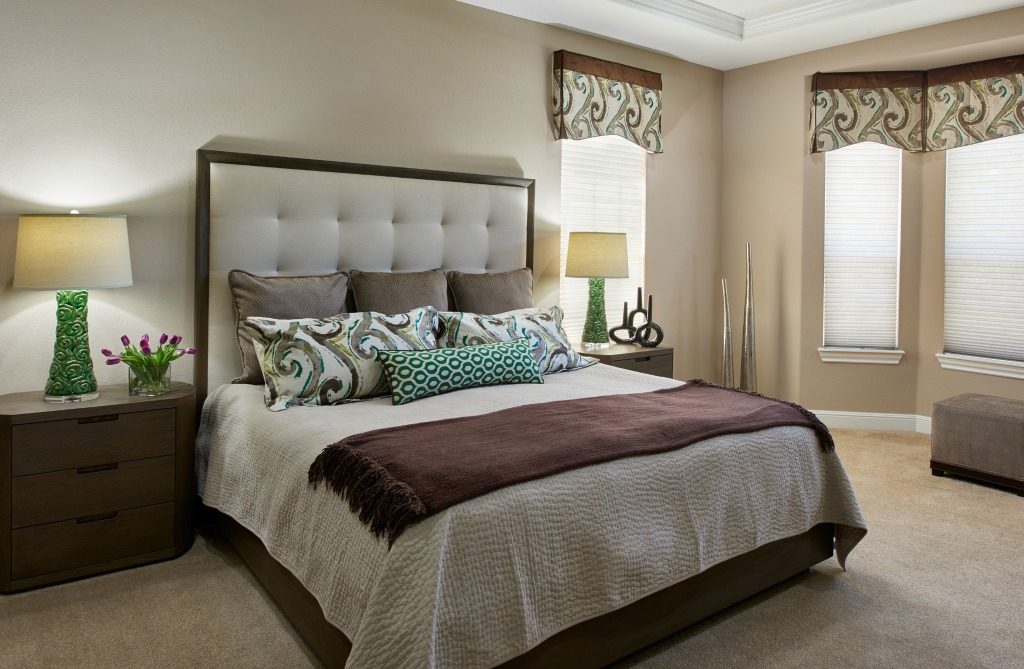
Balance
This refers to the appropriate distribution of furniture, objects and design elements, or how color is used throughout a space. Balance comes in three forms: symmetrical, asymmetrical and radial symmetry. Symmetrical is when the same objects are repeated in the same position on either side of the vertical axis. Think matching nightstands with the same lamps on both sides of a bed. Asymmetrical is the use of dissimilar objects of equal visual weight, like a sofa on one side and two conversation chairs on the other. Lastly, radical symmetry is when the elements of design are arrayed around a center point, such as a circular dining room table and chairs.
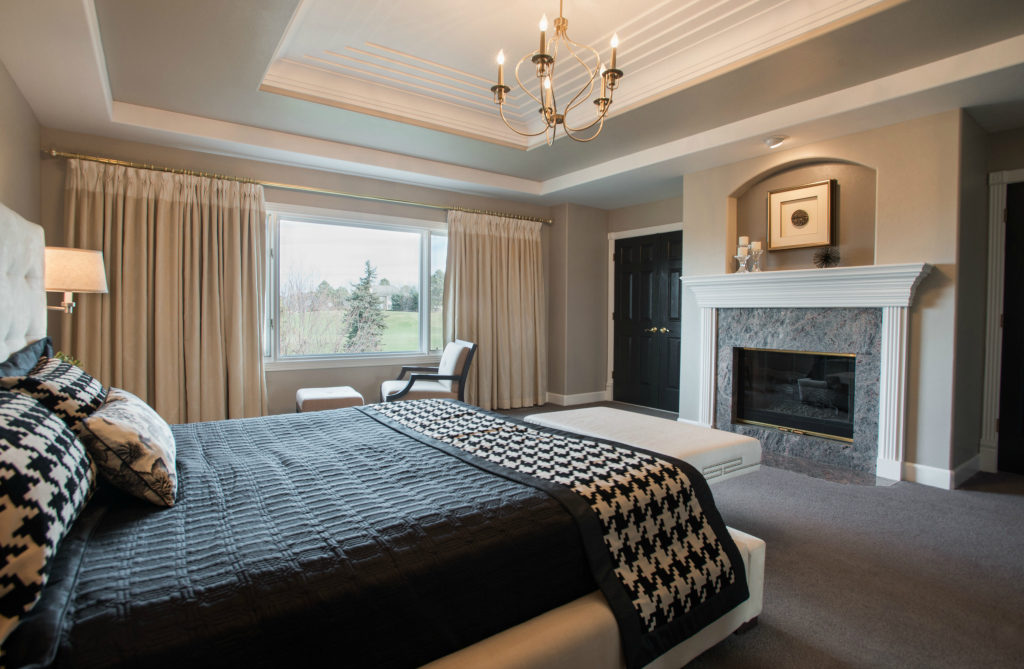
See this entire Beautiful Habitat project
Focal Point
This is where your eyes are drawn when entering the room and often one of the first things decided during a space-planning phase. A well-designed room will have at least one focal point, but sometimes more. Great options are architectural elements, like floor-to-ceiling windows, fireplaces or window nooks, but focal points can also be manufactured with beautiful statement rugs, sculptures or various forms of art, light fixtures and more.
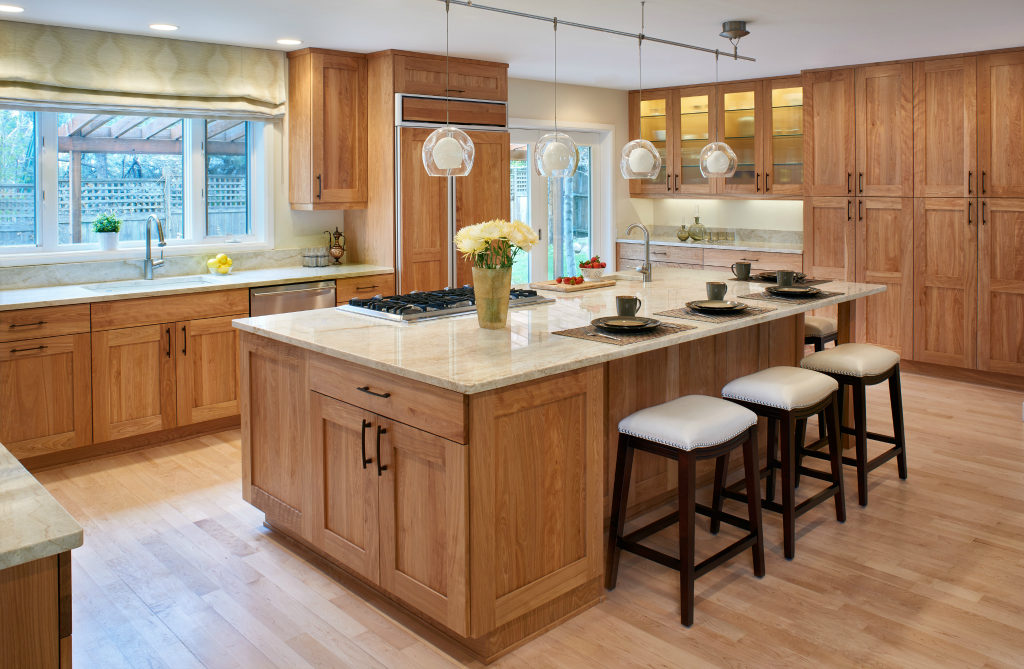
See this entire Beautiful Habitat project
Lighting
Well-placed lighting will enhance the room’s functionality. What’s the overall structure of the room? Lighting should be chosen and placed based on where and how it’s being utilized. There are three main types of lighting: ambient, task and accent lighting. For example, pendant lights hung over a kitchen island are perfect for seeing tasks you are performing, like chopping and mixing. Accent lights highlight your room’s architectural features or artwork, and ambient light refers to the basic fundamental lighting, such as the main ceiling fixture or a series of recessed lights.
For more information on mastering these ABCs of interior decorating, begin with part one of our Basics of Interior Design series.
Read our Top 3 Interior Design Tips e-book which outlines a few go-to rules for taking your interior design from ho-hum to a polished, designer space.
Ready to get started on your interior decorating project? Fill out our pre-consultation form now!
